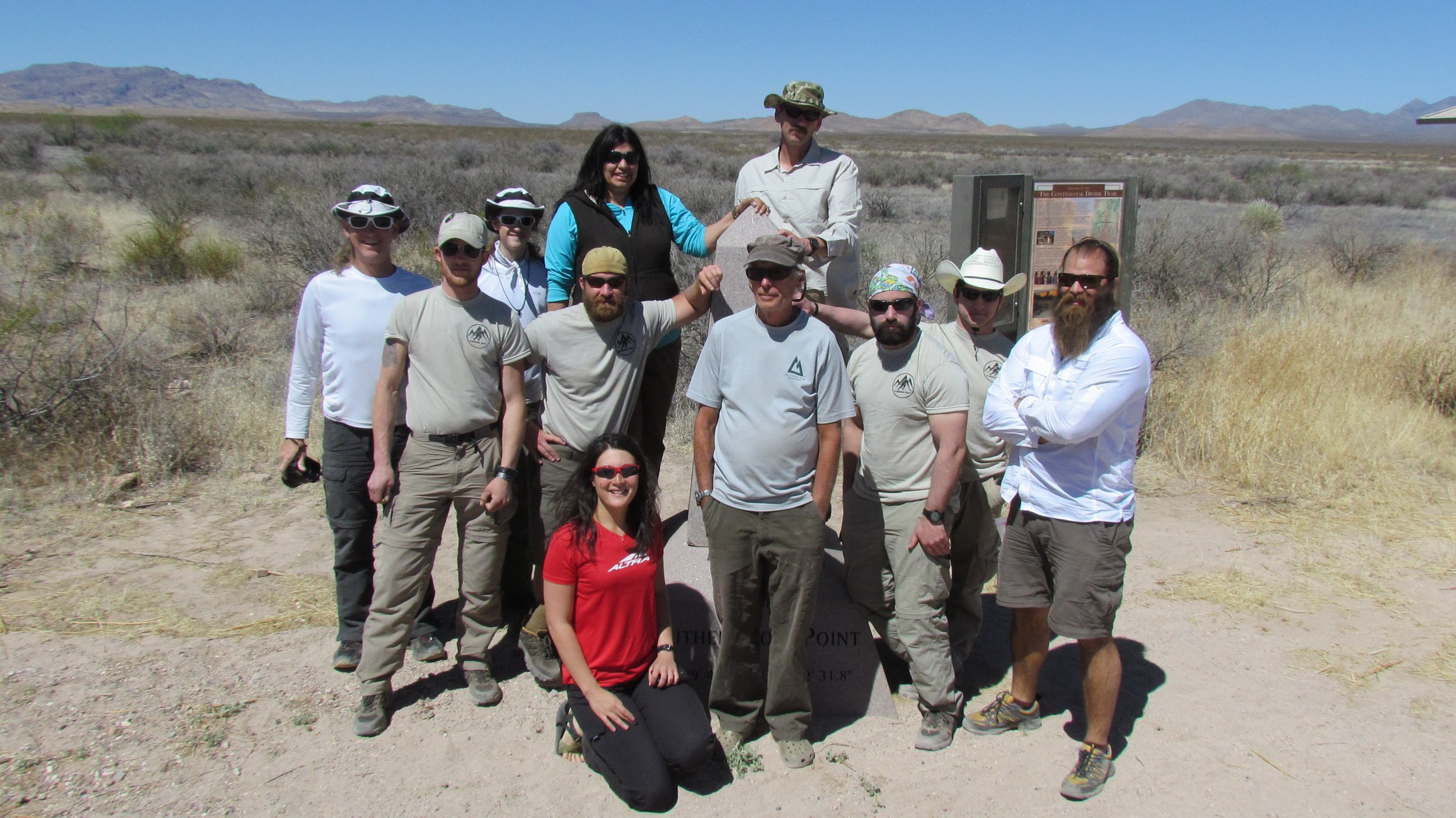Tales from the CDT Southern Terminus
The Warrior Hikers departed on their journey to walk off the war from the CDT Southern Terminus on April 12th. Photo by Radar.
This past week, I had the very rewarding privilege of volunteering with the Continental Divide Trail Coalition in New Mexico’s bootheel region. As northbound CDT hikers get ready to head on their hikes, the CDTC and its volunteers are helping them get down to the Southern Terminus.
The road out to the Crazy Cook terminus. Photo by Radar.
The Crazy Cook route that most CDT hikers are using as the Southern Terminus these days is really insane compared to the Continental Divide Trail Society route I hiked in 2011, which ends in Columbus. It took some volunteers 11 hours round trip each day to get hikers to the border. Volunteers spend 2-3 hours one way just on the dirt road to the terminus.
The CDTC shuttle-mobile had issues with the road out to the terminus.
This access road is so gnarly that I am worried that the truck of another volunteer, Radar, may never be the same. Teresa, who is the Trail Manager for the CDTC, got 2 flats in her rental truck in one day. I have no idea how the local trail angel who used to shuttle hikers until he passed away last year—Sam Hughes—did it!
The marker on Sam Hughes’ grave (Photo by Radar)
Another job of CDTC Southern terminus volunteers was caching water for the 5 BLM approved water caches bear boxes between the Southern Terminus and Lordsburg. Something many of the hikers we ran into didn’t realize is that the CDTC has to buy water for the caches from a water machine. That’s right, since water in NM is not plentiful and is expensive, it would be rude to borrow someone’s hose for the caches.
The NM water machine! (Photo by Radar)
Almost every day, Radar and I loaded up to 60 gallons of water into his car and then hiked them in to the bear boxes. Some hikers taking a zero in Lordsburg saw what we were doing and were shocked it is such a production. They were taking photos of us loading up the jugs and locals loved watching the event each day. Filling jugs, loading them up, hiking them in, and driving around to caches takes about 6 hours. Never again will I take water caches for granted!
Teresa from the CDTC at a water cache (Photo by Radar)
The bootheel of New Mexico is particularly harsh, and so we volunteers also brought hikers needing some extra care back from the trail to civilization. Even experienced hikers working on their Triple Crown were feeling the wrath of the Bootheel. Blisters, lost maps, intense wind, multiple dehydrations and not enough electrolytes were making the CDT attrition rate astoundingly high. We are telling hikers: if you are in trouble, gather at a water cache near a road crossing and a volunteer may be able to get you to safety. Radar and I were able to convince most of the many hikers feeling windworn to not outright quit the trail, but instead spend a few days resting and getting better prepared. Nonetheless, a few have thrown up their hands.
Gathering of CDTC volunteers and this year’s CDT hikers at a trail meet-and-greet at a local Silver City brewery
Volunteering on the CDT sure made my legs itchy to go hiking! Especially since I had yet to experience this route on the CDT, I was getting very eager to say forget it all and just head north. I kept wondering if I would fare better than the poor souls we dropped off at the border each day.
After so many miles of hiking, it felt so good to finally give back to the trail!








